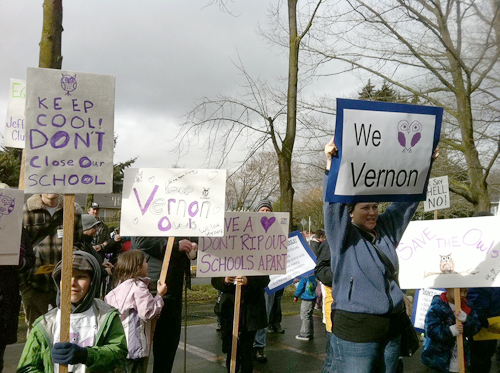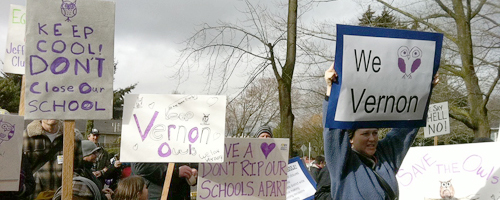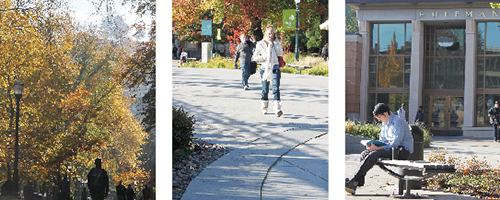Recently, more than 250 people gathered at Jefferson High School to attend a listening session regarding potential school closures in Portland’s North and Northeast communities. Board members and the superintendent labeled the move an attempt to balance the student populations within individual schools and allow for a wider range of educational programs to be made available to more students.
Packing the classrooms

Recently, more than 250 people gathered at Jefferson High School to attend a listening session regarding potential school closures in Portland’s North and Northeast communities. Board members and the superintendent labeled the move an attempt to balance the student populations within individual schools and allow for a wider range of educational programs to be made available to more students.
The idea is that, because smaller schools are more difficult to staff, better providing educational programs means closing schools and placing students in schools that already offer the programs. Supposedly this would save money and provide a better education.
Woodlawn and Vernon elemenatry schools were mentioned for possible closure. The Ockley Green school could potentially be merged indefinitely with Chief Joseph Elementary. Opponents claim that the closures will cause more instability in the region. Some claim the measure is racist, as it will affect schools with low-income and minority students the most.
While this proposal may allow the district to provide a wider array of educational programs, packing more students and teachers into fewer schools isn’t going to provide a better learning or teaching environment. Part of the reason private schools are so expensive is their lower student-to-teacher ratios, which allow for more one-on-one interaction. Lower ratios mean that each student has a better opportunity to be heard and to have specific questions answered.
Also, lower student-to-teacher ratios allow for stronger in-class relationships—teachers can learn more about the students’ individual learning styles. It allows teachers to better understand the students’ needs. Placing students in a situation in which teachers will only notice progress by the grades they give doesn’t constitute a healthy learning environment.
A student’s progress needs to be recognized through interaction, and this is far less likely to occur if the teacher’s attention is spread too thin. A teacher’s job becomes more arduous as the workload increases and there are more students to control. Not only is it more difficult for teachers to do their jobs effectively when they have more students to teach, grade and mentor, it also becomes more difficult to challenge those students.
Larger classes tend to have work that requires far less critical thinking. Homework and tests become the type of evaluations that require the least amount of grading time. Again, the amount of time spent on an individual student is diminished. Filling in a circle on a multiple-choice exam reveals very little about a student’s progress. A “right or wrong” approach isn’t the best way to evaluate students, and with increased enrollment, this becomes the standard method.
What bothers me most is the way that our nation views education in general. Education, from elementary school to university, is continually underfunded. “Budget cuts” has been a yearly theme for far too long. Call me idealistic, but the population’s education should be the highest priority of any nation.
Federal spending in the U.S. tells us just where education is placed on the list of priorities. In 2012, 3 percent of the nation’s budget was spent on education. In contrast, 25 percent of the budget was spent on defense.
To help illustrate this difference, according to knowdrones.com, one MQ-9 Reaper drone costs $28 million; one weapon load is an additional $320,000. An average salary for a teacher in Oregon, according to nea.org, is an estimated $57,348, so the cost of one fully equipped drone could cover the salary of roughly 494 Oregon teachers.
We need to invest in the intellectual growth and development of our youth and provide outlets for everyone to receive an education at a reasonable cost. Putting districts in a “make schools cost-effective” predicament will never allow for the best education.
If we reversed defense funding and education funding, problems such as the potential closures in North and Northeast Portland wouldn’t arise. As a nation, we need to change the way our decision-makers view the value of education. They say money talks; apparently, our youth and our future aren’t part of the discussion.





